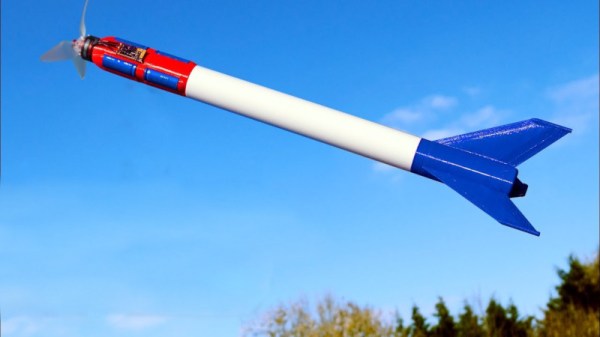SpaceX are perhaps most well known for their vertically-landing reusable rocket technology. The latest such effort is the Starship, which recently underwent a fiery test in the last month to attempt a bellyflop maneuver. [Nicholas Rehm] wanted to attempt a similar flight profile in the local park, and set to building an RC Starship of his own.
The build is like a few we’ve seen before, in which electric power is used to propel a rocket-like craft straight upwards using propellers and active stabilization. In this case, there’s a pair of twin motors with counter-rotating propellers which can pivot to direct their thrust, as well as four external control surfaces. These are all under the command of [Nicholas]’s custom flight controller.
Upon testing the rig, [Nicholas] was able to execute a smooth ascent, followed by a bellyflop, before a smooth return to vertical flight and descent. Landing vertically on the grass was out of the question, due to the rough surface, but we imagine it would be doable with the right landing gear attached.
While flight without wings in this manner isn’t particularly efficient, it’s great to see what can be achieved with smart use of control systems engineering to keep a craft stable. We look forward to seeing [Nicholas]’s next attempts, too. Video after the break.
Continue reading “SpaceX Starship Replica Attempts The Bellyflop”











